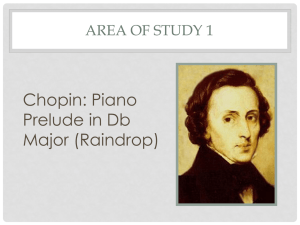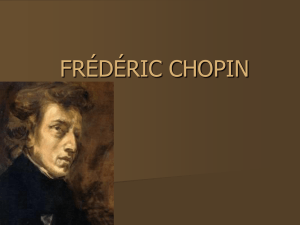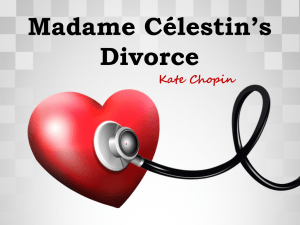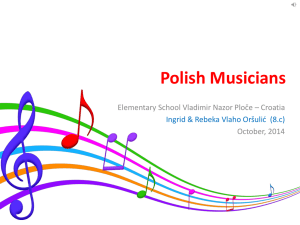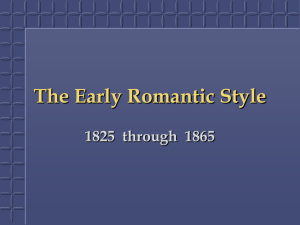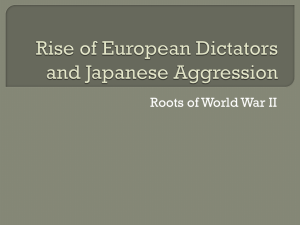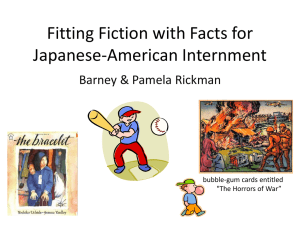Japan - The Spirit of Great Oak
advertisement
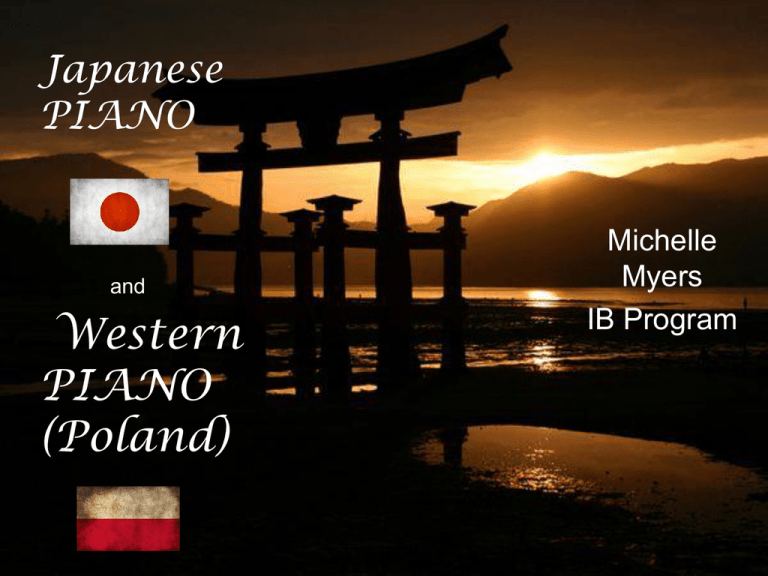
Japanese PIANO and Western PIANO (Poland) Michelle Myers IB Program Geography of Japan •73% of Japan is forested, mountainous. •Japan is one of the most densely populated countries in the world. •The islands of Japan are located in Pacific Ring of Fire. Japan has 108 active volcanoes. • Japan is located in the Pacific Ocean, an island nation of East Asia. • Archipelago of 6,852 islands. •Destructive earthquakes, often resulting in tsunami, occur several times each century. •Land Mass is 377,873km². Population • Population: 127.3 million. • Linguistically and culturally homogeneous, composed of 98.5% ethnic Japanese, with small populations of foreign workers. Zainichi Koreans, Zainichi Chinese, Filipinos, Brazilians mostly of Japanese descent, and Peruvians mostly of Japanese descent are among the small minority groups in Japan. • Japan has the longest overall life expectancy at birth of any country in the world: 83.5 years. • • 84–96%of the Japanese population subscribe to Buddhism or Shinto, including syncretism. Estimates are based on people affiliated with a temple, rather than the number of true believers. Other studies suggest only 30% of population identify themselves as belonging to a religion. • Nevertheless, the level of participation remains high, especially during festivals and occasions such as the first shrine visit of the New Year. -Japanese streets are decorated on Tanabata, Obon and Christmas. - >1% of Japanese Christian. -Other minority religions include Islam, Hinduism, Sikhism, and Judaism, and since the mid-19th century numerous new religious movements have emerged in Japan. Religion History Ancient Times: Japan first appears in written history in Chinese Book of Han. Despite early resistance, Buddhism was accepted. There was emergence of a strong Japanese state and was characterized by appearance of literature as well as development of Buddhist-inspired art and architecture. The smallpox epidemic of 735 killed 1/3 of Japan's population. This marked beginning of the Heian period, during which a distinctly indigenous Japanese culture emerged, noted for its art, poetry and prose. The lyrics of Japan's national anthem Kimigayo were written during this time. FEUDAL ERA Japan's feudal era was characterized by the emergence and dominance of a ruling class of warriors, the samurai. There were many “warring states.” During the 16th century, traders and Jesuit missionaries from Portugal reached Japan for the first time, initiating direct commercial and cultural exchange between Japan and the West. The Edo period also gave rise to kokugaku ("national studies"). MODERN ERA The early 20th century was a period of "Taishō democracy“ (increasing expansionism and militarization). World War I enabled Japan, on the side of the Allies, to widen its influence. Japan resigned from League of Nations 2 years later. In 1936, Japan signed with Nazi Germany, and the 1940 Tripartite Pact made it one of the Axis Powers. In 1941, Japan attacked Pearl Harbor and declared war, bringing the US into World War II. Because of the atomic bombings of Hiroshima and Nagasaki in 1945 , Japan agreed to surrender to US. In 1947, Japan adopted a new constitution emphasizing liberal democratic practices. Japan later achieved rapid growth to become the second-largest economy in the world (before China). Culture •Influences from Asia, Europe and North America. •Traditional arts include crafts such as ceramics, textiles, swords dolls and performances of various types of dances. -Tea ceremony, martial arts, calligraphy, origami, Geisha and games. SPORTS: -Sumo is considered Japan's national sport. -Martial arts such as judo, karate and kendo -Baseball, soccer, and golf is very popular as well. FOOD: Cuisine is based on combining staple foods, -rice or noodles, -soup and okazu (dishes made from fish, vegetable, tofu and the like to add flavor to the staple food) -fish And music… Japan Traditional Instruments - There are many large Japanese drums (taiko). The most dramatic is the Odaiko (big drum). http://www.youtube.com/watch?v=SPsHfqKx1NA - - The biwa is a short-necked lute, for gagaku, to accompany early puppet plays and also by blind monk entertainers, the Japanese equivalent of travelling minstrels. - The most famous flute is the shakuhachi bamboo flute. In medieval times, the shakuhachi became associated with wandering Buddhist priests known as komuso or 'priests of nothingness'. They played the shakuhachi as a spritual discipline. - http://www.youtube.com/watch?v=2jDt0NqBZyk • Percussion, stringed and wind instruments (mostly flutes). Piano and Classical Music in Japan • Western classical music, introduced in the late 19th century, now forms an integral part of Japanese culture. As elements of the Western middle class lifestyle gradually spread to other nations, the piano became common in these nations as well, especially in Japan. The Japanese were first exposed to it in the second half of the 19th century, after more than 200 years of national isolation during the Edo Period. But after that, Japan studied classical music earnestly to make it a part of their own artistic culture. http://www.youtube.com/watch?v= r9o4yKhwumI Lots of repetition and legato notes usually define the mood of modern Japanese piano music. Like most piano pieces in the world today, Japan mostly uses common time or 4/4. Japan’s culture perceives piano music as something to be enjoyed. They hold countless of concert halls for various piano performances. Japanese Pianist, Joe Hisaishi Composer, Director, Writer and Pianist. Biography and Studies -Hisaishi’s birth name was Mamoru Fujisawa, -Born in Nakano Nagano, Japan on December 6, 1950. -He started playing music from a young age. College of Music in 1969 to major in music composition. - He enjoyed his first success of the business in 1974 when he composed music for a small animation called Gyatoruzu. His first album, MKWAJU, was released in 1981. Influences •In the 1970s, Japanese popular music, electronic music, and new-age music flourished; those genres, as well as the Yellow Magic Orchestra (a Japanese electronic band in 1978–1983), influenced Hisaishi's compositions. •He developed his music from minimalist ideas and expanded toward orchestral work. Around 1975, Hisaishi presented his first public performance, spreading his name around his community. Prominent Works He is best known for his work with animator Hayako Miyazaki, having composed scores for many of his films. Including… Castle in the Sky (1986) -My Neighbor Totoro (1988) -Kiki's Delivery Service (1989) -Spirited Away (2001) -Howl's Moving Castle (2004) -Ponyo on the Cliff by the Sea (2008)…etc! http://ww w.youtube .com/watc h?v=H82 QHiUvY5 E&feature =related Western: Polish Pianist… FRÉDÉRIC CHOPIN Romantic Composer, Writer, and Pianist Biography • • • BIRTH DATE: March 01, 1810 DEATH DATE: October 17, 1849 PLACE OF BIRTH: Zelazowa Wola, Poland -Published his first composition at age seven and began performing one year later. • In 1831, he moved to Paris, socialized with high society and was known as an excellent piano teacher. His piano compositions were highly influential. He died of tuberculosis and ill health in 1849 Chopin's mazurkas based on the traditional Polish dance (the mazurek) but different from the traditional variety because they were suitable for concerts halls as well as dance settings. With his mazurkas, Chopin brought a new sense of nationalism. Comparisons http://www.youtube.com/wa tch?v=hOcryGEw1NY http://www.youtube.com/watch ?v=ThheURpb8-4 Differences Chopin • • • • • Chopin's preludes move up the circle-of-fifths. Chopin is considered one of the great masters of Romantic music. Chopin himself never named an instrumental work beyond genre and number. Chopin's music for the piano combined a unique rhythmic sense, frequent use of chromaticism, and counterpoint. Chopin composed music to accompany only Polish texts (but not German and French).. Hisaishi -Hisaishi’s songs vary from each other regarding his chords. -Hisaishi is considered one of the great masters of Japanese film scores (Asian Film Award for Best Composer) -Hisaishi personally names his songs. -While possessing a stylistically distinct sound, Hisaishi's music has been known to explore and incorporate different genre. -Hisaishi composed music for his Japanese audience through animations and movies. – China, Korea, etc. Similarities • Both attended a university to pursue music. (Chopin: Univ. of Warsaw and Hisaishi: Kunitachi College of Music). • Chopin's music is well known for benefiting from rubato (which was how he himself performed his music), as opposed to a strictly regular playing. Hisaishi also plays freely and stays in character with his songs. • The great majority of Chopin's compositions were written for the piano as solo instrument; all of his extant works feature the piano in one way or another. • Chopin's works emphasize nuance and expressive depth rather than sheer virtuosity. • Chopin was the first to write “ballades” and “scherzo” as individual pieces. Hisaishi also wrote songs for a bigger symphony. Citations/Bibliography • http://en.wikipedia.org/wiki/Social_history_of_the_piano# The_spread_of_the_piano • http://en.wikipedia.org/wiki/Music_of_Japan#Western_cl assical_music • http://en.wikipedia.org/wiki/Joe_Hisaishi • http://www.200chopin.com/images/chopin_head.jpg • http://en.wikipedia.org/wiki/Fr%C3%A9d%C3%A9ric_Ch opin • http://www.musicnotes.com/images/productimages/mtd/ MN0109055.gif • http://www.musicnotes.com/images/productimages/mtd/ MN0036882.gif • http://en.wikipedia.org/wiki/Japan • http://www.japan-zone.com/culture/instrument.shtml

